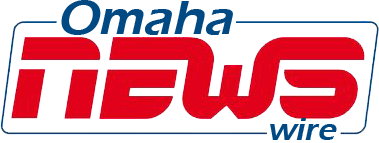In today's world, energy efficiency has become a vital aspect of sustainable practices across various industries. Among these, industrial lighting holds immense potential for energy savings and environmental impact reduction. Energy-efficient industrial lighting not only reduces energy consumption but also enhances operational efficiency and provides a safer working environment.
The Importance of Energy Efficiency in Industrial Lighting
Industrial facilities often require a significant amount of lighting to ensure optimal visibility and safety. However, traditional lighting solutions can be energy-intensive, leading to high electricity bills and increased carbon emissions. Energy-efficient industrial lighting addresses these concerns by using innovative technologies that consume less energy while maintaining adequate illumination levels. By embracing energy efficiency, industries can contribute to sustainability goals and reduce their environmental footprint.
Benefits of Energy-Efficient Industrial Lighting
Reduced Energy Consumption
Energy-efficient industrial lighting systems, such as LED (Light Emitting Diode) lighting, consume considerably less energy compared to traditional lighting options like incandescent or fluorescent bulbs. LED lights convert a higher percentage of electricity into visible light, minimizing energy wastage and resulting in substantial energy savings.
Cost Savings
The reduced energy consumption of energy-efficient industrial lighting directly translates into cost savings for businesses. By switching to LED lighting or implementing lighting controls, companies can significantly lower their electricity bills, improving their bottom line and profitability.
Extended Lifespan
Energy-efficient lighting solutions often have a longer lifespan than conventional options. LED lights, for example, can last up to 50,000 hours or more, whereas traditional bulbs may only last a fraction of that time. The extended lifespan of energy-efficient lighting reduces maintenance costs and the frequency of bulb replacements, further enhancing cost savings for industrial facilities.
Enhanced Quality of Light
Energy-efficient lighting technologies provide better quality of light, offering improved visibility and color rendering. This is particularly crucial in industrial settings where accurate visual perception is essential for tasks such as assembly, inspection, and quality control. Optimal lighting conditions contribute to higher productivity, reduced errors, and increased overall efficiency.
Key Factors to Consider for Energy Efficiency
Utilizing LED Technology
LED lighting has revolutionized the industrial lighting landscape, offering superior energy efficiency, durability, and versatility. When transitioning to energy-efficient industrial lighting, utilizing LED technology should be a top priority. LED lights are highly efficient, consuming up to 80% less energy than traditional lighting options. They also have a longer lifespan, require minimal maintenance, and provide flexibility in terms of design and control.
Implementing Lighting Controls
Lighting controls play a crucial role in optimizing energy efficiency in industrial lighting systems. By incorporating technologies such as occupancy sensors, daylight harvesting, and dimming controls, businesses can ensure that lights are only used when necessary and adjust lighting levels based on occupancy and natural light availability. Lighting controls maximize energy savings and enable a customized lighting experience for different areas within the facility.
Optimal Lighting Design
Effective lighting design is essential to achieve energy efficiency in industrial settings. It involves strategically placing lights, considering factors such as task requirements, lighting levels, and uniformity. By analyzing the specific lighting needs of each area and employing lighting design best practices, industrial facilities can minimize energy wastage and create a well-lit and productive environment.
Case Studies: Successful Implementations of Energy-Efficient Industrial Lighting
XYZ Manufacturing Facility
XYZ Manufacturing Facility, a leader in the automotive industry, implemented an energy-efficient lighting system to enhance productivity and reduce energy costs. By replacing outdated fluorescent lighting with LED fixtures and incorporating lighting controls, the facility achieved a 40% reduction in energy consumption. The improved lighting conditions also contributed to a decrease in errors and accidents, resulting in significant cost savings and increased employee satisfaction.
ABC Warehousing & Logistics
ABC Warehousing & Logistics, a large-scale distribution center, underwent a lighting upgrade to improve energy efficiency and operational performance. The facility replaced conventional metal halide fixtures with high-efficiency LED lighting and implemented intelligent lighting controls. As a result, energy consumption reduced by 60%, and the enhanced lighting quality led to improved accuracy in order fulfillment, reduced inventory errors, and increased worker safety.
Overcoming Challenges in Transitioning to Energy-Efficient Lighting
Transitioning to energy-efficient lighting in industrial settings may present some challenges. These include initial installation costs, retrofitting existing lighting systems, and resistance to change. However, the long-term benefits outweigh these challenges. Proper planning, financial incentives, and educating stakeholders about the advantages of energy-efficient lighting can help overcome these obstacles and facilitate a smooth transition.
Government Initiatives and Regulations Promoting Energy Efficiency
Governments worldwide are recognizing the significance of energy efficiency and have implemented various initiatives and regulations to promote sustainable lighting practices. These include offering financial incentives for energy-efficient lighting upgrades, setting energy efficiency standards for industrial lighting products, and providing resources for education and awareness. By aligning with these initiatives, industrial facilities can take advantage of incentives and contribute to a greener future.
The Future of Industrial Lighting: Emerging Trends and Technologies
The future of industrial lighting holds exciting prospects, with emerging trends and technologies paving the way for even greater energy efficiency and performance. Here are some key developments to look out for:
Advanced Lighting Controls: Lighting control systems are becoming more sophisticated, incorporating machine learning algorithms to optimize lighting schedules based on occupancy patterns and real-time data. These intelligent systems can detect human presence, adjust lighting levels accordingly, and even learn from user preferences to create personalized lighting experiences.
Connected Lighting Systems: Industrial lighting is becoming increasingly interconnected through Internet of Things (IoT) technology. Connected lighting systems enable centralized control and monitoring of lighting networks, allowing facility managers to remotely manage lighting fixtures, monitor energy consumption, and gather valuable data for further optimization.
Integration of Renewable Energy Sources: As the demand for sustainable energy solutions grows, industrial lighting is embracing renewable energy sources. Integrating solar panels and other renewable energy technologies into lighting systems helps reduce reliance on the grid and lowers carbon emissions. This approach ensures a more sustainable and self-sufficient lighting infrastructure.
Human Centric Lighting (HCL): HCL focuses on the impact of lighting on human well-being and productivity. By considering factors such as color temperature, intensity, and spectral distribution, industrial lighting can be designed to mimic natural daylight and support the body's natural circadian rhythm. HCL has been shown to enhance employee comfort, concentration, and overall performance.
Artificial Intelligence (AI) in Lighting Design: AI is revolutionizing industrial lighting design processes. With AI-powered software, lighting designers can simulate and optimize lighting scenarios, taking into account factors like energy efficiency, occupant comfort, and task-specific requirements. AI algorithms can generate lighting layouts and configurations that minimize energy consumption while maximizing lighting performance.
Li-Fi (Light Fidelity): Li-Fi technology utilizes light waves to transmit data, providing high-speed wireless communication in areas where traditional Wi-Fi may not be feasible or secure. Industrial lighting systems can incorporate Li-Fi capabilities, enabling data transfer, communication between devices, and Internet connectivity through light fixtures. This technology has the potential to revolutionize industrial connectivity and data transfer.
Smart Sensors and Analytics: Industrial lighting systems are increasingly incorporating smart sensors and analytics tools to optimize energy usage and maintenance. These sensors can detect occupancy, daylight levels, and environmental conditions, allowing lighting systems to automatically adjust brightness and color temperature to suit the immediate needs of the space. Analytics tools provide valuable insights into energy consumption patterns, allowing facility managers to identify areas for further optimization.
3D Printing in Lighting Design: 3D printing technology is making its mark in the field of lighting design. It enables the creation of complex and customized lighting fixtures with intricate designs, optimized light distribution, and reduced material waste. 3D printing opens up new possibilities for creative and sustainable lighting solutions in industrial settings.
Energy-efficient industrial lighting is a crucial component of sustainable practices in today's industrial landscape. By embracing energy efficiency through technologies like LED lighting, implementing lighting controls, and prioritizing optimal lighting design, businesses can reap numerous benefits, including reduced energy consumption, cost savings, extended lifespan of lighting fixtures, and enhanced quality of light. Successful case studies showcase the transformative impact of energy-efficient lighting, while government initiatives and regulations provide support and incentives. As the industry continues to evolve, staying updated on emerging trends and technologies ensures that industrial facilities can navigate the path to a greener and more sustainable future.
FAQs
Q1: How much energy can be saved by switching to energy-efficient industrial lighting?
Switching to energy-efficient industrial lighting, such as LED technology, can result in energy savings of up to 80% compared to traditional lighting options.
Q2: Are there any financial incentives available for transitioning to energy-efficient lighting?
Many governments and utility companies offer financial incentives, such as rebates and tax credits, to encourage businesses to adopt energy-efficient lighting solutions.
Q3: Can energy-efficient lighting improve employee productivity in industrial settings?
Yes, energy-efficient lighting with optimal lighting design can enhance visibility, reduce errors, and create a more comfortable working environment, leading to improved employee productivity.
Q4: What are lighting controls, and how do they contribute to energy efficiency?
Lighting controls encompass technologies like occupancy sensors, daylight harvesting, and dimming controls. They help optimize energy usage by ensuring lights are only used when needed and adjusting lighting levels based on occupancy and natural light availability.
Q5: How can industrial facilities stay updated on the latest trends and technologies in energy-efficient lighting?
By staying engaged with industry publications, attending conferences and seminars, and collaborating with lighting professionals, industrial facilities can stay informed about the latest trends and technologies in energy-efficient lighting.







 English (US) ·
English (US) ·